The Adventures of Baron Munchausen: Gilliam and the Art of the Reveal Part II
Continuing examining Gilliam's reveal shots in The Adventures of Baron Munchausen
This is the second part of a series examining the “reveal” shots in “The Adventures of Baron Munchausen”.
The previous installment of this series is also available.
Sometimes a reveal shot can be as simple as forcing a change in perspective. In the second scene where Sally and The Baron meet with the King of the Moon, we are treated to a perfectly ordinary scene. Gilliam gives us a wall, adorned with pictures, small tables table covered with candleholders, surrounded by chairs … and our protagonists in the middle.

Notice that Gilliam isn’t showing us anything other than the contents of this room and the two walls we can see as part of the frame. We’re led to assume that there are four walls – or at least, at a minimum, that the building continues on in the directions which we cannot see. Sally, looking up at the walls we can see, begins to walk towards the left wall while looking up.
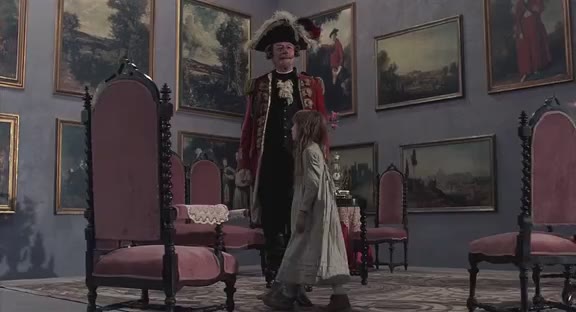
We see her look at a place where there should be a wall, as she continues to walk forward…

… and she stumbles as we begin to see the reality of their situation.
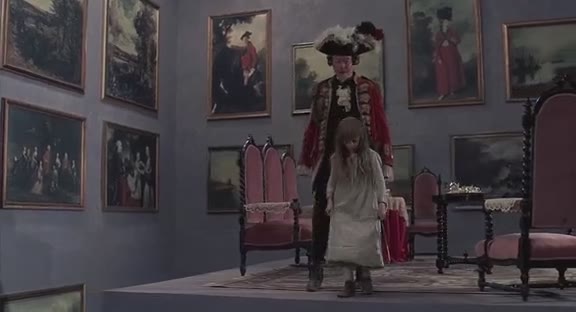
Gilliam cuts to a much wider view, and we can see that there never were any walls other than the two we could see, with a large empty space between the floor and the walls.
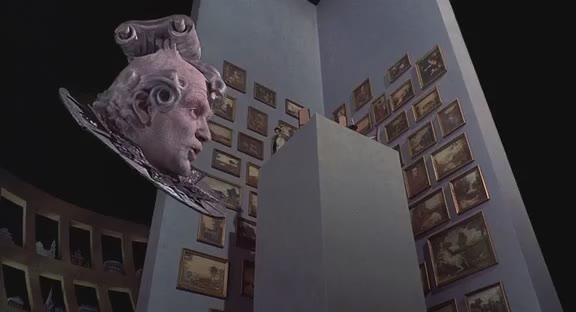
It’s interesting to note that this should not have been a surprise for Sally – she and the Baron should have been able to see that there were only two walls. Or were there, subjective to the characters? In a way, it doesn’t really matter; we share the surprise of the characters when we are treated to a full scale representation of the insanity of the King. Everything he presents bears some resemblance to reality, but as soon as some perspective is gained, it becomes grotesque and unlike anything we would consider real.
In a later scene, the Baron, his servant Berthold, and Sally fall from the moon into a volcano, to land miraculously unharmed. We are introduced to the god Vulcan (god of war) as he throws flaming chunks of volcanic rock at his underlings.
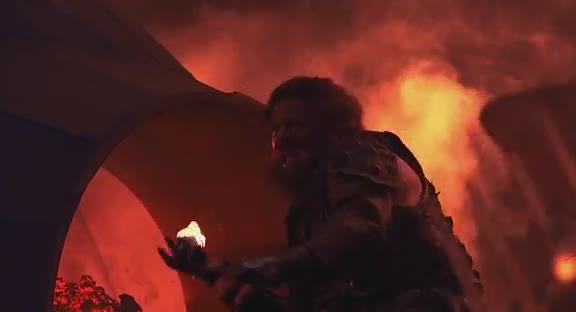
Our heroes find themselves in a crater in the volcano. We have no idea what is around them.
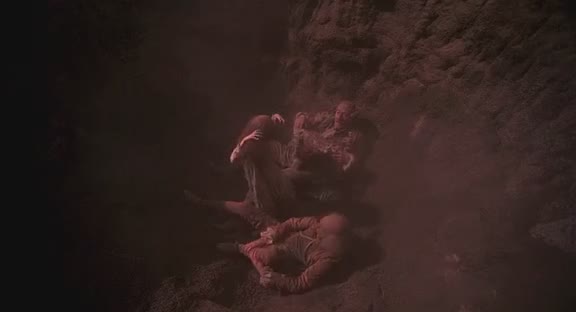
The camera draws back to show us what must be giants. We gather this based on the size of these creatures and their relationship to our protagonists (who are normal-sized people):
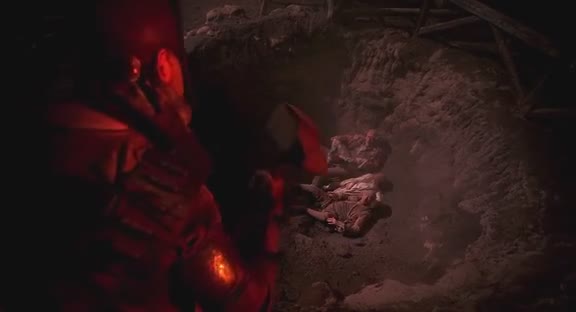
Gilliam gives us the reverse shot of two of the giants …
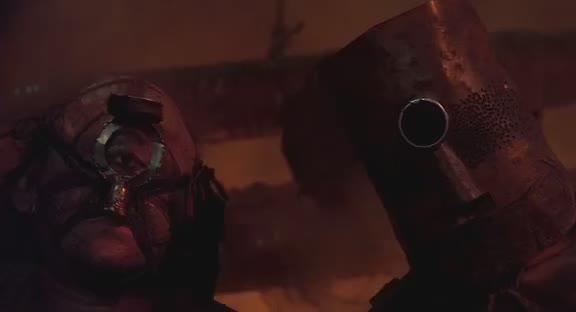
… but only so Vulcan can inject himself into our frame of reference. We know how big these creatures are, in comparison to The Baron, because of the previous pulling back shot.
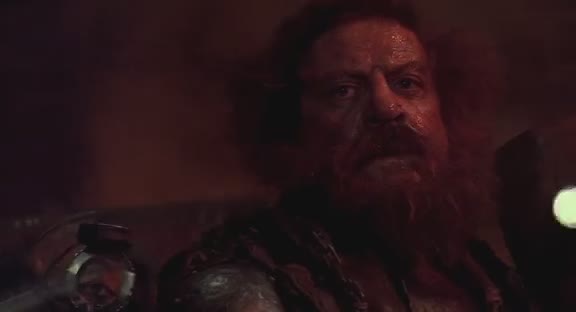
To confirm this, The Baron speaks (and is seen) in the reverse shot, still maintaining the known scale of the shot. These creatures are seen to tower over our protagonists, and are quite literally looking down on them, for they are gods and demi-gods.
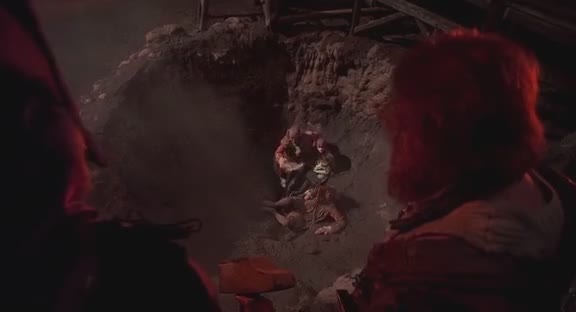
We go back to Vulcan, who has decided that he will bring this “tiny mortal” to face him.
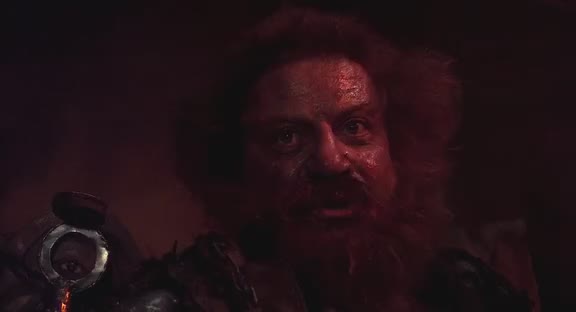
Vulcan’s hand comes down to grab The Baron. This is done so quickly that we are only aware that a hand has entered the frame as we see Vulcan lunge forward, so we don’t immediately assimilate the information about the scale of the hand which we see enter the frame and grab The Baron.
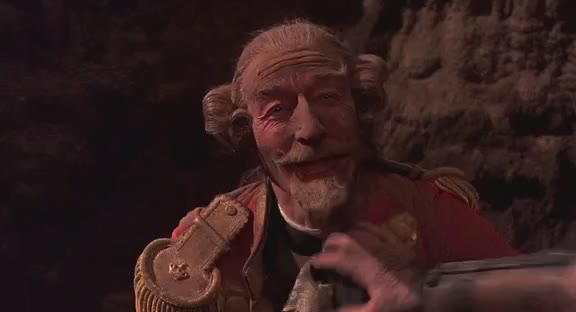
Gilliam wisely gives us an interstitial shot of The Baron’s companions to break this sequence up. We see his boots and his shadow pass over them to continue the established scale and perceived danger in the scenario. By focusing on their expressions, the suspense of the confrontation with Vulcan can continue to build, and the scale can be built up even more.
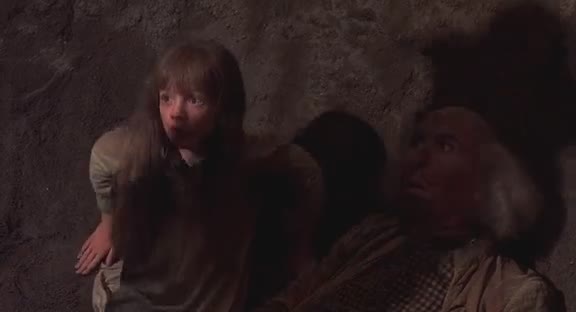
The Baron lands on the same vertical plane as Vulcan. This, again, is done very quickly, so we can see that Vulcan has grabbed him, but not any more information than the basic kinetics of the motion.
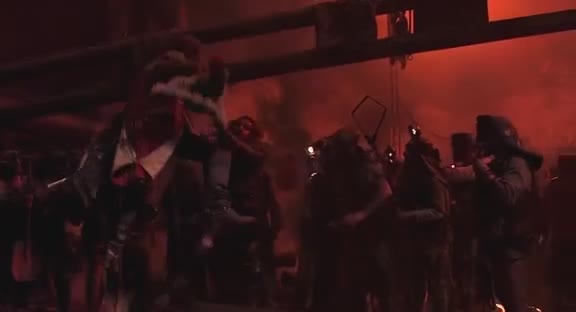
The Baron at rest. We now see that his eyeline is significantly higher than Vulcan’s – how is this possible?

In the denouement of this particular farcical reveal, we are given the reverse of the last semi over-the-shoulder shot, and Vulcan looks him up and down. The reality of the difference in sizes is now apparent …

… and the god who was shown to be a giant in comparison to The Baron is actually shorter than him, as Vulcan comically assesses the difference in size between the two characters. There are a number of other comparative references between the two of them, including The Baron’s romantic prowess with Vulcan’s wife and his greater value in the epistemological system that is the reality of the film. We could have been immediately privvy to this information, but through the use of a reveal shot setup, Gilliam is able to not only set up the relationship between the two characters, but also to fool us briefly with a very clever sight gag.
(All images are presented under fair use guidelines – all frame grabs are property of Columbia/Tristar, or any other entities who hold copyright on this film. They are presented for exclusively educational purposes.)